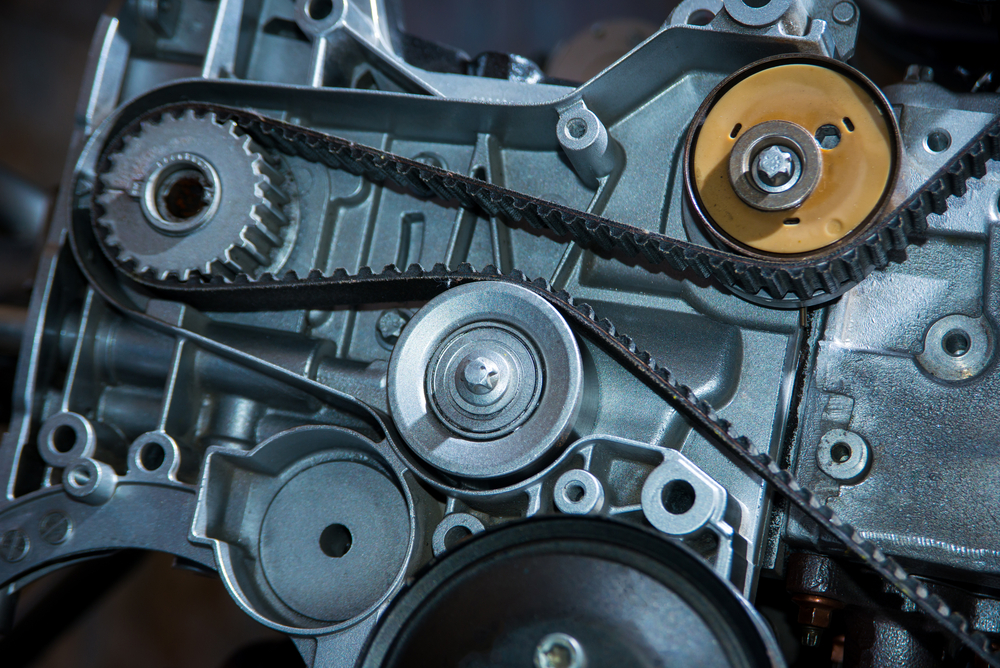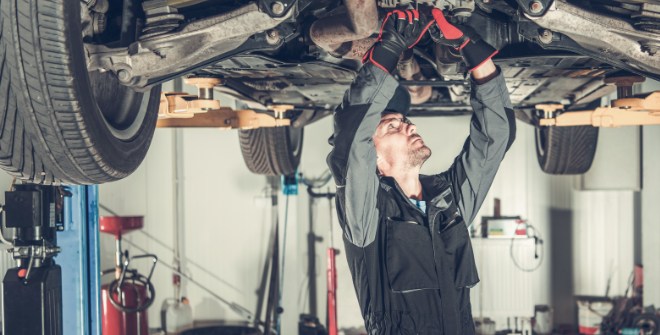What's the Difference Between Serpentine & Timing Belts?

Most of the time we only think about car parts once something goes wrong with them, but knowing what's going on under the hood before there is a problem is important. At Christian Brothers Automotive, we believe that a knowledgeable driver is a safe driver (and a happier one, too!), and that's why we're here to explain the difference between these two drive belts: serpentine belt and timing belt.
In this post, we'll explain the differences between serpentine belts and timing belts, the issues they can cause when worn, how to identify which one may be causing your problems, and how often to replace them.
What's the Purpose of Drive Belts?
While the cheeky answer is "to drive," the mechanic’s answer is that drive belts are actually an important part of your vehicle's engine. Drive belts allow you to start and keep your engine running by transferring power from the crankshaft to other parts of your engine. Let’s discuss the two most commonly known drive belts: the serpentine belt and the timing belt.
What's a Serpentine Belt?
“Serpentine” means of or like a snake. Just like a snake coils and can wrap around tree branches and such, the serpentine belt loops and wraps around several pulleys in your engine area to activate and keep certain motor-driven parts moving. It’s long, smooth, and made of rubber, and it helps operate parts like the:
- Air conditioning compressor
- Power steering system
- Alternator
- Water pump (on some cars)
Your engine's serpentine belt is located on the outside of the engine block, making it easily visible. Unlike the timing belt, this placement makes inspecting and replacing your serpentine belt very easy.
Dangers & Signs of a Worn Serpentine Belt
A worn serpentine belt can be a dangerous problem for your vehicle. If left unchecked, it can lead to serious issues such as engine overheating or even a breakdown on the road. It's important to know the signs of a worn serpentine belt, so it can be replaced before it becomes a major problem. Here are some signs to look out for:
- Loud squealing, slapping, or knocking noises coming from under the hood
- Reduced power steering assistance
- Excessive cracking or fraying
- Glazing on the top of the belt or in the grooves
- Poor performance and reduced power
- Battery-shaped charging system warning light on your dashboard
Depending on your vehicle's make and model, replacing your serpentine belt every 60,000 to 100,000 miles is recommended, even if the belt isn’t showing signs of wear. However, if any of these warning signs are present, you should inspect the belt immediately and consider replacing it as necessary. Investing time in this small but critical piece will only help avoid expensive repairs down the line and keep your car safe.
What's a Timing Belt?
A timing belt, also known as a cambelt, is an essential engine component, fully responsible for synchronizing the rotation of the crankshaft and camshaft to ensure that the engine's valves open and close when they should and to ensure that the pistons fire correctly.
This timing is very important for your engine's performance and parts, like the:
- Oil pump
- Fuel injector
- Water pump (on some cars)
The timing belt is inside the engine, so inspecting it can be difficult. This means that if you suspect there may be an issue with your timing belt, you should take your car to a professional as soon as possible.
Dangers & Signs of a Worn Timing Belt
Your vehicle's engine can be in serious danger if the timing belt becomes damaged or slips off. Bad timing belts can cause irregular and misaligned fire rates in the engine, leading to severe damages that could even cause a complete engine breakdown while driving.
Here are some common indicators that your timing belt may be worn out so you can avoid costly engine repairs:
- Engine misfires, stalls, or idles improperly
- Difficulty starting your car
- Decreased fuel efficiency
- Engine vibration or shaking
- Check engine light is on
- Unusual smoke color coming from the exhaust
Timing belts should be replaced every 60,000 to 100,000 miles depending on your vehicle's make and model, but it's important to take your car in for service and repair if you've noticed any of the above problems that may be related to a timing belt issue.
How to Tell If One of Your Drive Belts is Going Bad
When it comes down to it, the serpentine and timing belts both have similar symptoms of wear and tear, and it can be difficult to tell which one is going bad. If you're worried about one of your drive belts going bad, here's what you can do:
- Check for visible signs of wear on both belts (if possible)
- Listen for any unusual noises coming from under the hood
- Take any odd driving patterns seriously
- Look for warning lights on your dashboard
- Consult with a trusted mechanic who can diagnose any drive belt issues
As mentioned before, your biggest protection against worn serpentine and timing belts is professional inspection and maintenance done by a local auto mechanic you trust. For example, oil is corrosive, and if it leaks onto the serpentine belt or the timing belt the oil will contaminate the belts and eventually cause premature failure. Most of the time, if you aren’t aware of a leak, you won’t be aware that the oil is ruining your belts. Inspections really do serve as preventive care for your car, because they help you address maintenance inconveniences before they become repair crises.
Turn to Christian Brothers Automotive for Belt Maintenance
At Christian Brothers Automotive, we understand how important it is to keep your car running smoothly. That's why we offer comprehensive engine services, including serpentine and timing belt replacement services, preventive maintenance, and more!
Our expert technicians use high-quality parts and honest service to ensure your car stays in top condition – something we've been doing for drivers nationwide since 1982! It’s our commitment to Driving Joy!
Find the closest Christian Brothers Automotive repair shop near you to get started.


[1].jpg)
sunwash-tech-with-customer.png)

